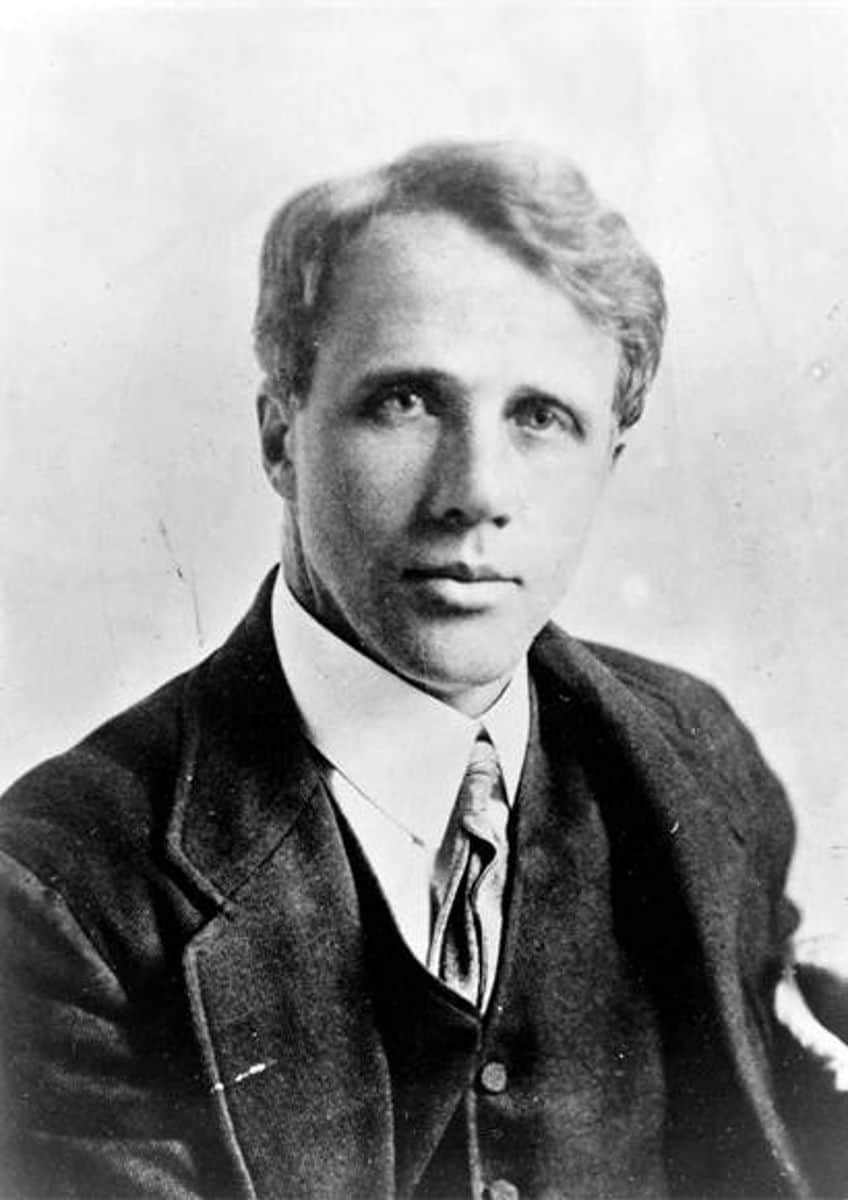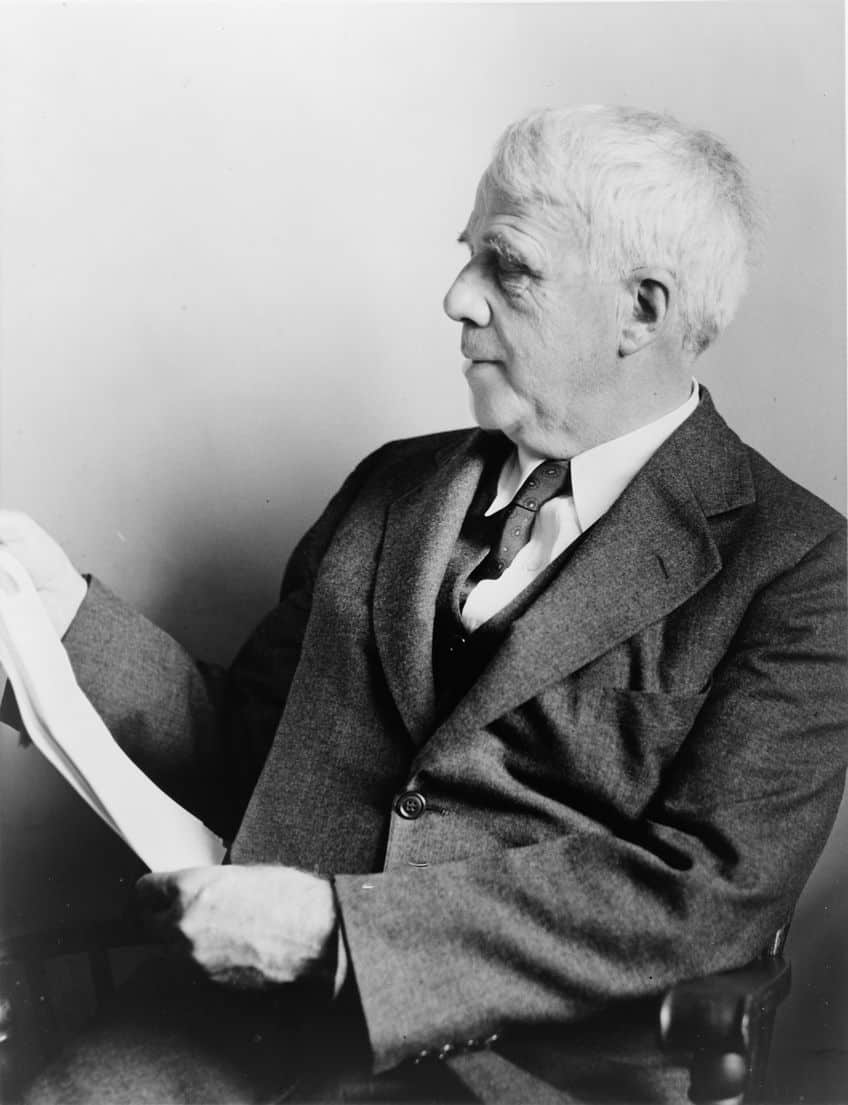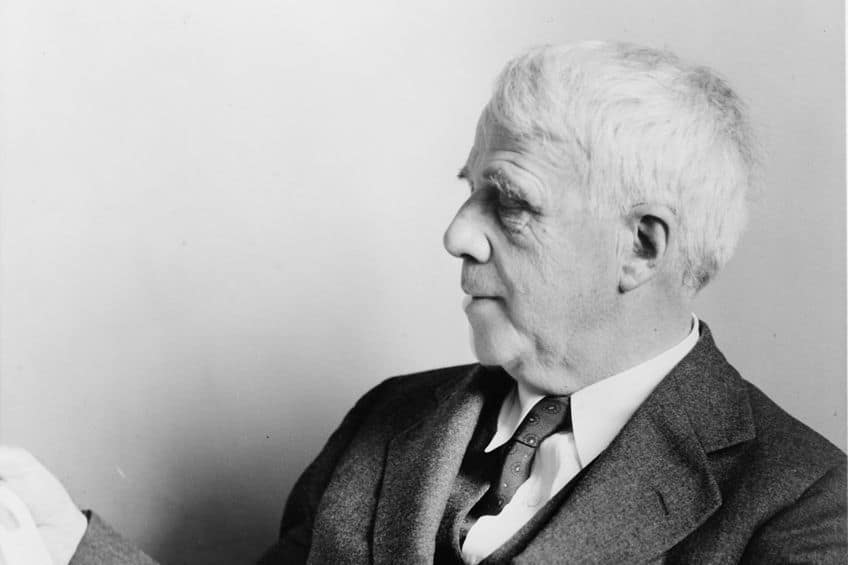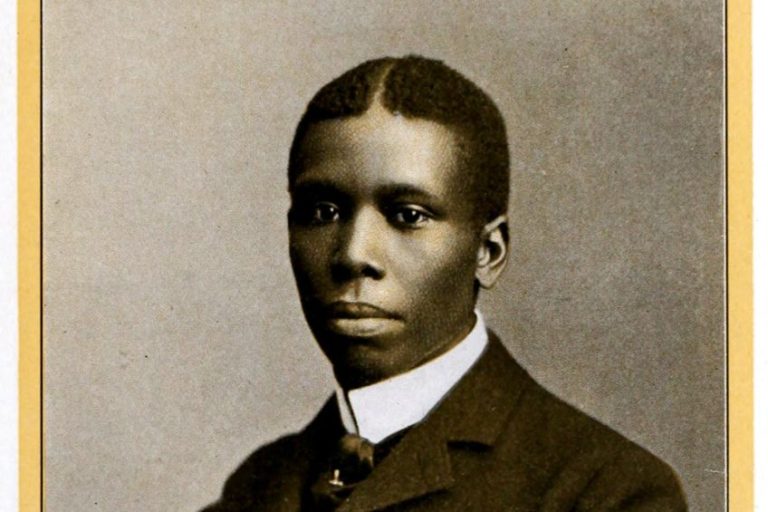“Nothing Gold Can Stay” by Robert Frost Analysis – A Closer Look
Robert Frost wrote some of the best-known American poems of the 20th century, and Nothing Gold Can Stay is one of those poems. In this article, we are going to examine this poem alongside a biography of the writer and some of the Nothing Gold Can Stay themes. If this is a poem that you would like to learn a lot more about, then this article should give you a good in-depth Nothing Gold Can Stay by Robert Frost analysis. Keep reading if a great Robert Frost poem like this interests you!
Nothing Gold Can Stay by Robert Frost Analysis
| Date Published | 1923 |
| Type of Poem | Lyric poem |
| Rhyme Scheme | AABB |
| Meter | Iambic trimeter |
| Topic | Beauty and impermanence |
Nothing Gold Can Stay is a short poem, but one of the best by Robert Frost. The poem is concerned with the ephemeral and fleeting nature of beauty in the world, and it conveys this through natural imagery. However, we will examine this in far more depth as we dive into our in-depth Nothing Gold Can Stay by Robert Frost while asking questions like: “What is the theme of Nothing Gold Can Stay?”. However, before we head into that analysis, let’s first have a quick look at a summary of Nothing Gold Can Stay so that we can prime ourselves for the analysis ahead.

Summary of Nothing Gold Can Stay by Robert Frost
When it comes to any poetic analysis, it is generally best to discuss the poem in significant depth. However, for those who may not have the time for a Nothing Gold Can Stay by Robert Frost analysis, we will instead have a shorter look. This is a short summary of Nothing Gold Can Stay with some of the major points that are worth considering.
- The poem uses natural imagery. This text makes use of a number of different natural images. For instance, it focuses on terms like “leaf” and “dawn” while also making use of colors like “green” and “gold”. These more natural images contribute to the Nothing Gold Can Stay
- The poem is about impermanence. This poem explores the idea of beauty and the impermanence of it. It uses natural imagery to convey this general concept and how all eventually withers away. What is beautiful does not last forever, but it is still beautiful in the moment.
- The poem uses a rhyming couplet structure. While the poem is an example of a lyric poem, this is a very broad category. Frost could have more freedom with the form and laid it out as four pairs of rhyming couplets for a total of eight lines with an AABBCCDD rhyme scheme.
This has been our brief summary of Nothing Gold Can Stay by Robert Frost. However, if you want to learn a lot more about this poem, such as the Nothing Gold Can Stay themes and meanings, then keep reading.
There is a lot more to learn about this poem as we dive into our Nothing Gold Can Stay by Robert Frost analysis.
Biography of Robert Frost
| Poetic Movement | American Regionalism |
| Years | 1874 – 1963 |
| Place of Birth | San Francisco, California, United States |
| Known For |
|
Robert Frost is generally seen as one of the best poets to have come out of the United States. Many of his poems have become well-known around the world for their use of rural landscapes and American colloquial speech. Much of his work was concerned with everyday people in everyday situations, and this has no doubt been one of the contributory factors in which his work has seen such significant appeal from so many around the globe.

In addition to all this, his work was also the recipient of significant praise throughout his life. He was awarded the Pulitzer Prize on four entirely separate occasions for four different texts, and, near the end of his life in 1960, he was even awarded the Congressional Gold Medal. All of this indicates that Robert Frost was beloved and notable in his life as well as after it. His work continues to hold sway in the present day.
An In-Depth Nothing Gold Can Stay by Robert Frost Analysis
Nothing Gold Can Stay by Robert Frost is a poem that makes use of a rather interesting general structure. It may be an example of a lyric poem, but this term is a very broad one that only refers to poems that discuss feelings in some way. This indicates that it is not a formalized type of poetry in the ordinary sense. This allowed Robert Frost to instead adapt the form to suit his particular needs.
This poem is made up of four sets of rhyming couplets. Each of these couplets has an AA rhyme structure. So, the full rhyme scheme of Nothing Gold Can Stay by Robert Frost is AABBCCDD. As may also be noted in this layout of the rhyme scheme, the poem has no stanzas.
However, for the sake of convenience when performing this Nothing Gold Can Stay by Robert Frost analysis, we will separate it according to the couplets.
This is not a particularly lengthy poem and is only made up of eight lines in total. The primary formal poetic technique it adopts is the use of the coupled rhyme. The poem as a whole makes use of the metaphor of the natural world, but that will be explored in more detail as we dive into the poem in question.
Lastly, the poem is primarily written in an iambic trimeter metrical structure. This means that it makes use of six syllables per line with an unstressed-stressed alternating structure. This allows the poem to read as if it has a more ordinary language delivery. However, there are some lines where the meter is different and altered for emphasis. So, now that we have gone through these general points, we can dive straight into our in-depth Nothing Gold Can Stay by Robert Frost analysis.
The First Couplet
Nature’s first green is gold,
Her hardest hue to hold.
The first line of the poem calls direct attention to color. We are confronted with two conflicting colors: green and gold. Green has typically come to represent the natural world and the first three words of the first line confirm this too. The beginning of nature’s “green” refers to the blooming of the plants as well as the dawn of day, and the word “green” is used as a stand-in for this.

However, while the poem makes use of the color green, it directly compares it to gold. The color of gold is one that represents something to us but isn’t actually all that prevalent in the natural world. We have to generally mine for gold, but gold represents quality and importance to us. It is a symbol of wealth and power.
The second line flows from the first and uses a powerfully alliterative line to further solidify the view of the gold. We do not often use the word “hue” when looking at the natural world, but we do when looking at gold. The natural world is here shown as something that, when it blooms, is at its brightest and greatest. However, we are also told that this is the “hardest hue to hold”.
We are already exposed to the idea that this hue is going to fade away from us.
The Second Couplet
Her early leaf’s a flower;
But only for an hour.
The second couplet continues the trend established in the first. The first line has another image of blooming, in the use of the word “early”, and the transition of a leaf to a flower. This is another transition from green to another color, as was used in the first couplet. The beginnings of the season of blossoming will see the proliferation of color but, as we know from the last couplet, it is hard to keep this color going. It is going to fade.

The second line in this couplet reinforces this too. The color is going to remain but only for “an hour”. This is not entirely a literal use of time as plants do not generally bloom for only one hour (although a later illustration will provide additional context here), but it is a metaphorical representation of how little time there is. This time will fade away.
This is stated far more concretely in the next couplet.
The Third Couplet
Then leaf subsides to leaf.
So Eden sank to grief,
Until this point, we have been shown some alchemical-style images of plants transforming into gold and leaves becoming flowers, but here, we see that “leaf subsides to leaf”. The color is starting to fade from the world, and the beauty that had once been so stunningly on display has begun its departure from our world.

The second line in this couplet evokes the Bible. The image of the Garden of Eden as an evergreen place of natural perfection is also a place that has faded from us in our reality and, as the season of blooming has come to an end, even so, does Eden sink away.
Eden is also personified here as possessing grief, and this reveals to us the inherent sadness in the impermanence of this natural image we have been granted.
The Fourth Couplet
So dawn goes down to day.
Nothing gold can stay.
The first line of this couplet makes further use of an alliterative presentation. The dawn of bloom has become daytime. We have here been given a literal understanding of the “gold” that illuminated the leaves. The early sunshine shone upon the world, but it has lifted, and the day has continued.

The gold that was once there has since departed from the world. We have been given images of beauty and changes in the natural world, but as the metaphorical day continues, so does the beauty leave the world. This poem is about far more than only the natural world’s cycles, but about us and our impermanent place in the world around us.
Nothing Gold Can Stay Themes and Meanings
So, what is the theme of Nothing Gold Can Stay by Robert Frost? Over the course of our Nothing Gold Can Stay by Robert Frost analysis, we have examined each of the lines of this poem to come to an understanding of the poem’s message of beauty and its impermanent nature.
The poem makes extensive use of natural imagery to explore the themes it wishes to provide to us, but these images can both be taken from a more literal perspective and from a metaphorical one.

On a more literal level, we can see the cycle of life. The day begins and progresses onwards, and the colors of the world shift and change. They blossom and bloom around us. On the other hand, it can serve as a metaphor about the beauty of the world, and our own lives, and how they are ultimately impermanent things that will soon come to an end. There is no way to avoid that particular fact of existence. The poem wants us to understand this aspect of the world. Time marches on without gazing back at us!
Today, we have performed an in-depth Nothing Gold Can Stay by Robert Frost analysis for those who are interested in learning about this famous poem by one of the most notable American poets of the 20th century. This analysis has examined the poem in question, as well as the poet and some of the Nothing Gold Can Stay themes on display. Hopefully, this has been an eye-opening look into this poem, but there are still many other Robert Frost poems in the world that are also worth your time and attention.
Frequently Asked Questions
What Is Nothing Gold Can Stay by Robert Frost?
This is a poem by Robert Frost. The poem in question, like many of the poems by this author, makes use of a significant amount of natural imagery, which is used to convey ideas of beauty and loss. It is a beautiful poem that stands strong alongside many of the other poems for which Robert Frost has become so well-known.
Who Was Robert Frost?
This figure was a 20th-century American poet. He has come to be seen as a quintessential American poet because of his use of American colloquial vocabulary in many examples of his work, as well as his dedication to the use of American natural imagery. He received numerous accolades throughout his life, such as the Congressional Gold Medal in 1960. His work continues to be beloved around the globe.
What Is the Rhyme Scheme of Nothing Gold Can Stay by Robert Frost?
Nothing Gold Can Stay makes use of an alternating rhyme scheme. This means that it has an AABB structure. This structure of paired rhyme is known as rhyming couplets. The use of this particular type of rhyme scheme also ensures the rhythmic quality of the poem, as each two lines rhyme with one another before passing on to the next line. It has a pleasant sound to it that rolls off the tongue nicely.
What Is the Theme of Nothing Gold Can Stay?
The Nothing Gold Can Stay themes surround ideas relating to beauty and the general impermanence of life itself. The poem makes extensive use of natural imagery to get this point across to the reader. The concept of gold is used to create the image of something that will, with time, fade away from us.
Which Poetic Techniques Are Used in Nothing Gold Can Stay by Robert Frost?
This poem makes use of a number of poetic techniques. Some of the most notable of these techniques include the use of a couplet style for rhyming, as well as the use of imagery and symbolism relating to the natural world and the color of gold. However, there are other poetic techniques that are used in this poem, such as personification when describing nature and assonance throughout many of the words.
Justin van Huyssteen is a freelance writer, novelist, and academic originally from Cape Town, South Africa. At present, he has a bachelor’s degree in English and literary theory and an honor’s degree in literary theory. He is currently working towards his master’s degree in literary theory with a focus on animal studies, critical theory, and semiotics within literature. As a novelist and freelancer, he often writes under the pen name L.C. Lupus.
Justin’s preferred literary movements include modern and postmodern literature with literary fiction and genre fiction like sci-fi, post-apocalyptic, and horror being of particular interest. His academia extends to his interest in prose and narratology. He enjoys analyzing a variety of mediums through a literary lens, such as graphic novels, film, and video games.
Justin is working for artincontext.org as an author and content writer since 2022. He is responsible for all blog posts about architecture, literature and poetry.
Learn more about Justin van Huyssteen and the Art in Context Team.
Cite this Article
Justin, van Huyssteen, ““Nothing Gold Can Stay” by Robert Frost Analysis – A Closer Look.” Art in Context. November 29, 2023. URL: https://artincontext.org/nothing-gold-can-stay-by-robert-frost-analysis/
van Huyssteen, J. (2023, 29 November). “Nothing Gold Can Stay” by Robert Frost Analysis – A Closer Look. Art in Context. https://artincontext.org/nothing-gold-can-stay-by-robert-frost-analysis/
van Huyssteen, Justin. ““Nothing Gold Can Stay” by Robert Frost Analysis – A Closer Look.” Art in Context, November 29, 2023. https://artincontext.org/nothing-gold-can-stay-by-robert-frost-analysis/.









